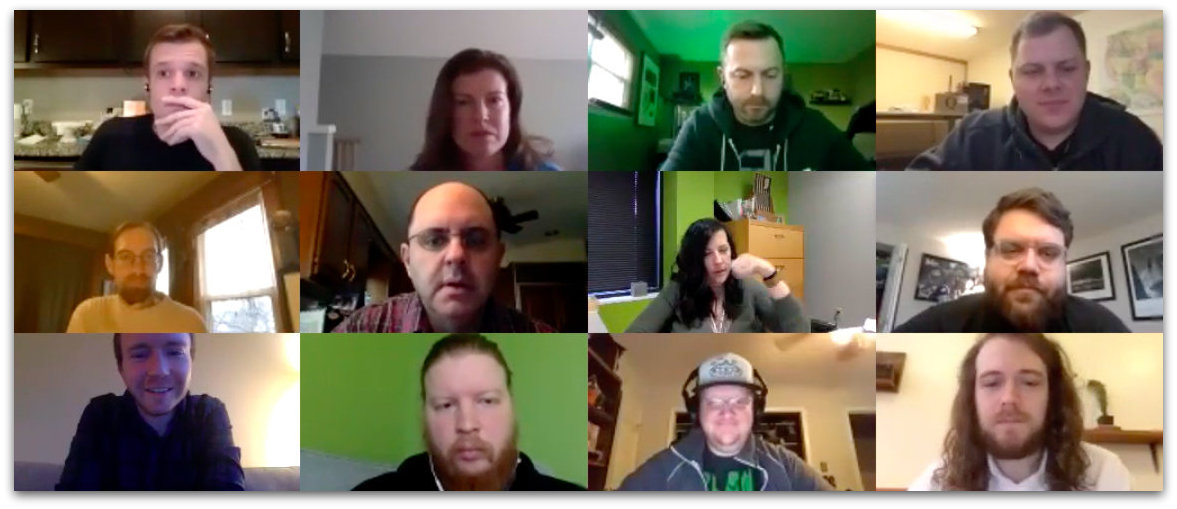See if this sounds familiar: There’s an important update that needs to be discussed, so you stop working to join the team for a 30-minute meeting. But instead of walking down the hall to a conference room, you click a link to launch your webcam. On the other side of your screen, several colleagues are starting into a lively discussion.No one’s in the same room. One person’s at a coworking space in Toronto, one is in her Utah home office, and another is at a coffee shop in Indiana. A few years ago, Formstack’s virtual meetings were still somewhat of an anomaly in the business world. But with so many companies embracing the benefits of remote work, it’s not at all uncommon for a typical workday to include remote meetings that span time zones and geographies. If your employees are among the 43% of Americans who spend at least some time working remotely—or if 50-60% of their work is done while they’re away from their desks—it’s time to embrace the virtual meeting. Studies have repeatedly shown that ineffective meetings can cost companies millions of dollars. And if you thought getting everyone together in a conference room was challenging, just wait until you’re contending with poor internet connections, audio static, and dozens of digital distractions. On the other hand...Once you get comfortable collaborating in an online environment, there’s a lot to love about the virtual meeting. As a remote company, the team at Formstack has undergone some trial and error in this area, and we’ve learned a thing or two about how to make meetings work. There are plenty of ways to have a productive virtual meeting. Here are a few of our top tips:
1. Use ONE method of remote communication.
If one remote employee is video conferencing, so should everyone else. This is true even if two or three attendees are in the same physical location. Having everyone meet in the same virtual environment eliminates confusion and helps ensure your remote attendees won’t get lost when in-person conversations start to get loud and lively.
2. Choose software that’s virtual-meeting-friendly.
Anyone who’s spent the first ten minutes of a remote meeting on “can you hear me?” and “did we lose someone?” knows how much time unreliable technology and shoddy connections can waste. Thankfully, video conferencing has come a long way. This is one area where your investment will pay back in spades. Platforms like Zoom are designed specifically to connect dozens of participants with high-quality video. Other software such as Adobe Connect and AirClass allows you to seamlessly switch between screen sharing and video, collaborate on digital whiteboards, and even get analytics on who’s participating.

3. Limit your remote meetings to a handful of attendees.
This is one standard that should be set for all meetings—remote or not. Any time a meeting includes people who don’t really need to be there, you increase the risk of conversation veering off into the realm of unrelated, unhelpful, and inactionable topics—a phenomenon known as bikeshedding. Get a large group together in a virtual space, and you’ll also face increased competition from digital distractions and multitasking among attendees who have little to contribute to the actual meeting. By keeping attendance low, you can eliminate noise and stay laser-focused.
4. Embrace digital collaboration.
These days, there really aren’t any significant limitations to what you can accomplish when meeting remotely. You can use chat rooms to share important links and files, Google Docs or Office 365 to collaborate on documents in real-time, and virtual breakout rooms to coordinate on team milestones before coming together as a larger group. I’d go so far as to say that, with the right techniques and tools, remote meetings are often more productive than their in-office counterparts. Embrace them!
Looking for more ways to keep your remote teams engaged? We have plenty! Click the link below for our favorite suggestions on how to infuse your online interactions with an extra element of fun.











